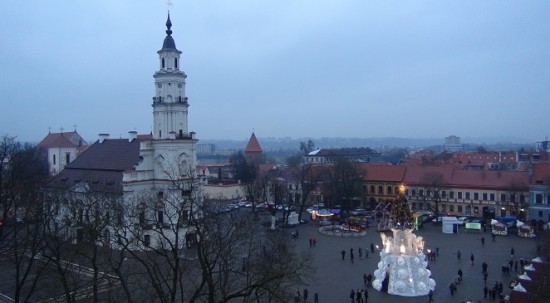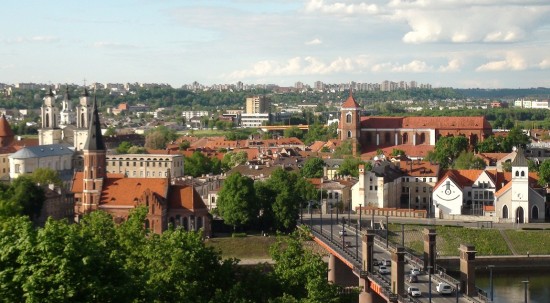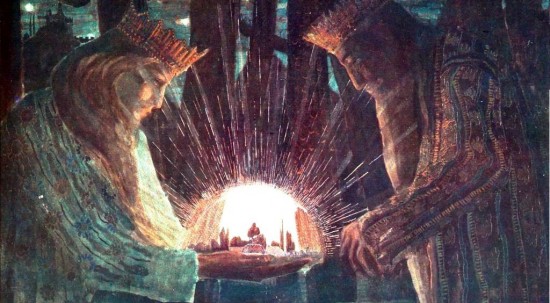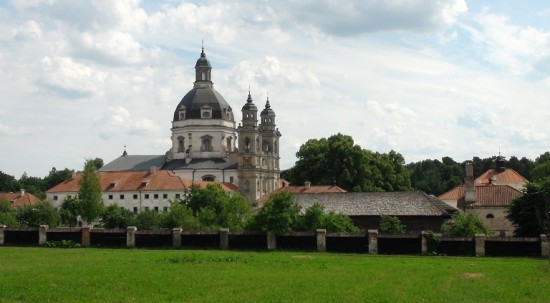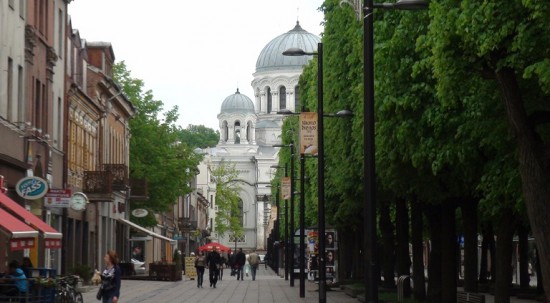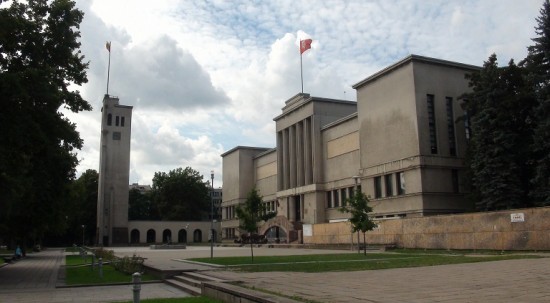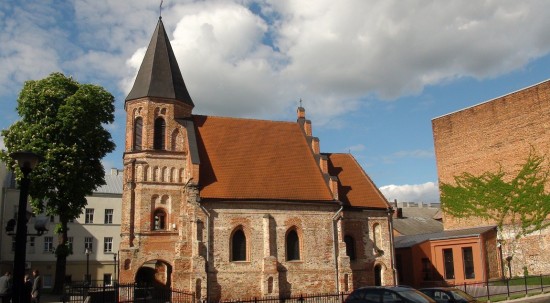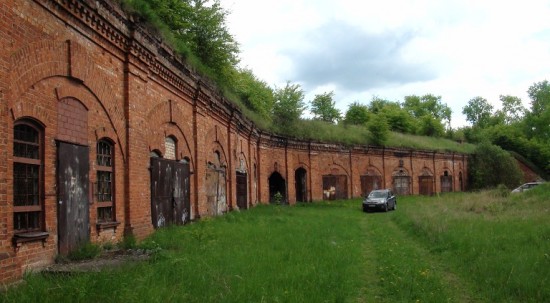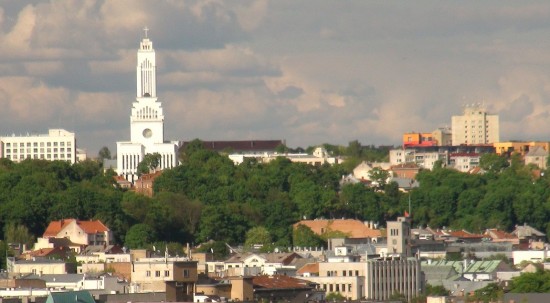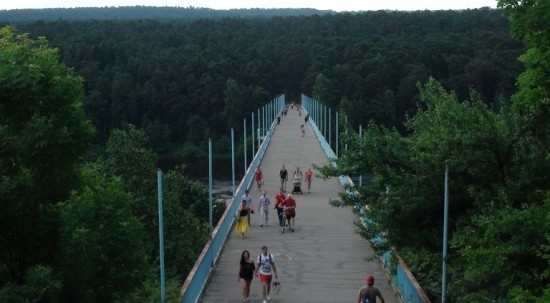Weekend in Kaunas: Top 10 Sights & Experiences
Kaunas may be Lithuania's second city but it is not that far behind Vilnius in both size and importance. Ryanair flights and good road/rail access opened up Kaunas as a weekend destination. Here are some ideas to spend your couple of days in Kaunas.
1.Spend time (and maybe sip a drink) in the historic heart of Kaunas, the Rotušės square which is still surrounded by authentic buildings, churches and the city hall (Old Town).
2.Enjoy the incredible view of Kaunas Old Town and its gothic spires from Aleksotas vantage point (Aleksotas).
3.Take a short trip to Pažaislis monastery, one of the prettiest Baroque complexes in Northern Europe. In summers you may swim in the local Kaunas Reservoir beach nearby (Pažaislis).
4.Learn about Lithuania's most famous painter and his symbolist works right in his prime shrine, the M. K. Čiurlionis Gallery (New Town).
5.Walk under the tree shades of Laisvės Avenue, noting the prime Industrial Era and Interwar architecture en route (Central Post, Officers' Club, Sobor, Interwar Presidency, Musical theater) (New Town).
6.Listen to a free evening carillon concert in Vienybės square while looking at its monuments dedicated to the Lithuanian freedom (New Town) .
7.Walk the Vilniaus street, a new-old hub for Kaunas downtown cafes and entertainment with authentic pre-20th-century buildings. Don't forget to take a detour to the small Gothic St. Gertrude church (Old Town).
8.Visit at least a single fort of the pre-WW1 Kaunas fortress (best surviving European fortifications of the era). 9th fort with its sad past and museum is the most popular, but renovated 7th fort and dilapidated 6th fort are more off-the-beaten-path alternatives (Fortress districts).
9.Ascend the Žaliakalnis hill district in a funicular to see the massive art deco Ressurection church and other key projects of Interwar independent Lithuania, standing amidst historic private homes where luminaries used to live (Žaliakalnis).
10.Take a stroll in one of many Kaunas parks, such as Santakos (confluence) or Basanavčiaus, both offering interesting views of Lithuanian prime river Nemunas.
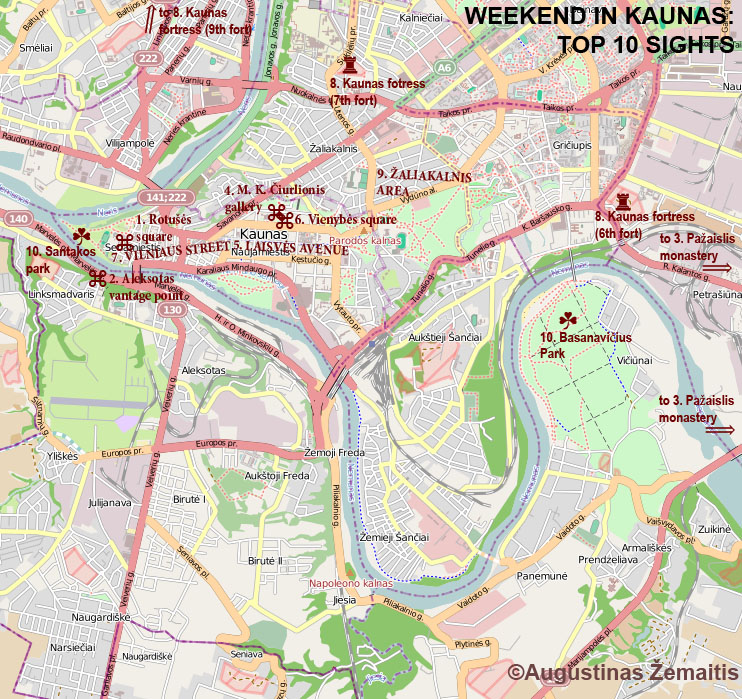
Map of the top 10 Kaunas tourist sights. ©Augustinas Žemaitis.
Kaunas museums
While Kaunas is Lithuania's second city, a considerable number of top national museums are located there. A lot of them either date to the era Kaunas served as temporary capital of Lithuania (1920-1940) or are otherwise influenced by that period.
Art museums and galleries
All the Kaunas art museums are located in the New Town.
Mykolas Čiurlionis art gallery is the top location to see the works of Lithuania's most famous artist (a symbolist painter and a composer) who has an asteroid and a mountain range in Russia named after him.


A fragment of 'Tale of Kings' by Mikalojus Konstantinas Čiurlionis.
Mykolas Žilinskas art gallery is the main Lithuanian encyclopedic repository of international art, ranging from Egyptian mummies to modern era. Everything was bequeathed by a Lithuanian-American art collector Mykolas Žilinskas. It's not Louvre but it has a few great underrated artworks.
Museum of Devils presents a unique-in-the-world collection of devil and demon statuettes based on Lithuanian and foreign mythologies collected by painter Antanas Žmuidzinavičius. His own works are exhibited in the next building.
Historical and cultural museums
War museum (New Town) gives information on Lithuanian warfare from the ancient times to recent NATO missions. Underground crypt and surrounding memorials glorify those who created modern Lithuania or died for it.
Sports museum (Old Town) is full of cups and prizes ever won by Lithuanian sportsmen internationally, in Lithuania or Lithuanian diaspora events. It will interest collectors of such items and fans of professional sports but may bore the others. A circus section is available nearby.
Lithuanian top basketball trophies at thes sport museum of Kaunas. ©Augustinas Žemaitis.
ab printing house (Suburbs) is an underground (both literally and metaphorically) institution where locals printed illegal press to circumvent Soviet censorship. The location itself is the most intriguing. Prior arrangement is needed to visit as the premises are still owned by the same dissident family.
Kaunas castle (Old Town) is mostly destroyed, but the rebuilt tower has a minor Medieval exhibition.
VII and IX fort museums present the history of Kaunas fortress and (especially) the later usage of these buildings for Soviet and Nazi German imprisonments and extrajudicial killings. IX fort museum is the more throughout and famous one.
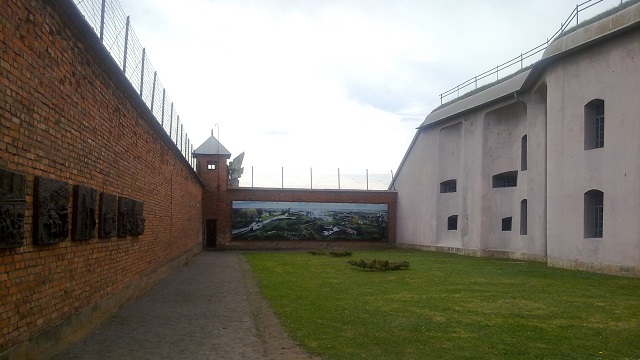

9th fort museum of Kaunas. ©Augustinas Žemaitis.
Kaunas interwar presidency (Old Town) offers temporary exhibitions focusing on the interwar lifestyle of Kaunas city.
Museum of literature is rather empty, explains works of merely a few writers and may be not very interesting to foreigners who are not literature buffs.
Technical museums
A few of the historic museums are also rich in old technics, with old weapons available in War museum and old printing materials exhibited in ab printing house.
A former anti-Soviet activist demonstrates a secretly assembled printing press her family used to create material exposing Soviet injustices (ab Spaustuvė). ©Augustinas Žemaitis.
Atomic bunker (Kaunas Soviet districts) is a major private collection of KGB surveillance devices, gas masks and other peculiarities of the Cold War, housed in an underground nuclear shelter. Arrangement recommended for visiting.
Aviation museum (Aleksotas) has a couple of aircraft and much information on Lithuanian aviation history (with old pictures) including (of course) the Lituanica flight.
Museum of National musical instruments (Old Town) offers a complete array of ethnic Lithuanian musical instruments (used by folk originally and by "folk orchestras" today). However it is not possible to listen to their sound.


Traditional Lithuanian instruments at the Kaunas folk instrument museum (left-to-right): skrabalai, skudučiai, kanklės, džingulis. Skudučiai are played by a band of people each taking some of the pipes; top skudučiai are amateur-made while the bottom ones are a modern professional v20th-century century kanklės shown here are decorated in patriotic motifs as is now popular. ©Augustinas Žemaitis.
Retromobile museum (Aleksotas) is a middle-sized garage of restored old vehicles, especially Soviet ones. Prior arrangement needed to visit.
Memorial museums
In the interwar Temporary capital era Kaunas housed all the Lithuanian luminaries of the era and their impressive houses are often open for visitors, offering a glimpse of rather luxurious interwar lifestyle.
Ones most seeping in the local spirit (and not requiring a prior arrangement to visit) are those of opera singer Kipras Petrauskas and composer Juozas Gruodis. Writer Balys Sruoga lived in a rather more plebeian house. Japanese tourists love the Chiyune Sugihara museum dedicated to their consul who helped Jews escape Nazi Germany, but it has less of that authentic "taste of history".
Writer S. Nėris memorial museum in Kaunas. ©Augustinas Žemaitis
All the above memorial museums are located in prestigious Žaliakalnis borough. Interesting homes beyond it are those of writer Salomėja Nėris (self-designed building in the suburbs) and star-priest Juozas Tumas-Vaižgantas (apartment near the Old Town church he worked at).
Natural museums
Museum of zoology is the Lithuania's largest repository of taxidermist works as well as beetles and butterflies, both local and foreign
If you prefer live animals, you'd like Kaunas zoo more. Both were started by naturalist Tadas Ivanauskas during interwar period and both seem somewhat shabby today - if one was in similar places in foreign countries and is not particularly fond of them one won't find much of interest.
History of Kaunas, Lithuania
Medieval merchant city (before 1795)
Thanks to its location on the confluence of two major rivers Kaunas was important for trade since its establishment in the Medieval era. By this time most of the trade went by rivers as there were no roads in Lithuania and everything was surrounded by lush forests. Unfortunately, rivers were also used by enemy forces and the main enemy of Lithuania in those days were the Teutonic Order. Kaunas Castle was built in the 14th century to deter them from this strategic location.
Kaunas of the 1300s had German merchants of the Hanseatic League among its inhabitants. In this era, the first churches were built. After Lithuania's Christianisation, they were soon joined by more magnificent Gothic religious buildings in the early 1400s as the city expanded still centered around the City Hall square.
Despite its mercantile importance, Kaunas was not a capital of any voivodship at the time. It was part of Trakai voivodship of the Grand Duchy of Lithuania and had a peak population of 10 000.
Kaunas of the Grand Duchy of Lithuania historical era. At the time, just the area between Nemunas and Neris rivers was built up
Fortress city of the Russian Empire (1795-1918)
The first time Kaunas came to political prominence was only after the demise of the Grand Duchy. In 1843, the Russian Empire (which has captured Kaunas in 1795) chose it as the capital of newly formed Kaunas Governorate that included approximately half of today's Lithuania. Moreover, Kaunas was made the seat of a Catholic diocese. Political and religious importance was followed by military one as the Imperial government chosen the city as a site for a new class I fortress.
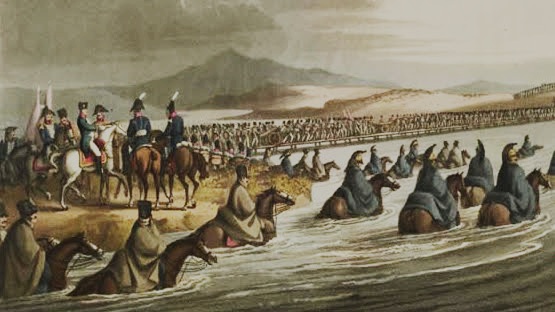

Napoleon's 500 000-strong Grande Armee crosses Nemunas from Aleksotas to Kaunas in 1812. With Nemunas then forming Russia's western boundary this was where the doomed invasion began. After Napoleon was defeated Russia annexed the southern bank of Nemunas in 1815 (modern boroughs of Aleksotas, Freda, and Birutė).
The city was transformed by massive construction. Nine forts sprung up around the city (in years 1882 - 1915), with redoubts, batteries to support them and the Central Fortification as the inner ring of defense. To the east of the Old Town, the New Town was built with all the administration and housing for officers as well as the impressive Sobor and what is now known as the Freedom Avenue. Soldiers lived in yet other new or heavily expanded districts: Freda, Panemunė, Šančiai. Many of them continue to lay there in cemeteries. By the year 1896 military personnel made up 28% of the entire Kaunas population of 68 000.


In the fortress years, the entire city of Kaunas was surrounded by such barbed wire fence.
The fortress was never completed with a new fort erected every few years. After the first outer circle of defense was completed (seven forts by 1891) the government ordered the construction of a new one further from the city center. However, the advent of modern warfare changed everything and when the war against Germany finally started (the fortress was built mainly having such conflict in mind) in 1914 the mighty Kaunas fortress fell after a siege that lasted only a couple of weeks (1915). No new fortresses of this size have been constructed in the world ever since.
Provisional capital of the interwar Lithuania (1918-1939)
In 1918 Lithuania became independent, but with the Polish occupation of Vilnius city (1920) Kaunas was declared "Provisional capital" and therefore the seat of government, parliament, and president. This was the golden age of Kaunas. In 20 years the city was transformed from a provincial outpost into a modern city, "swallowing" suburbs of Vilijampolė and Aleksotas while the number of people increased by 66% (92 000 to 153 000) as urbanization drive reached the agricultural Lithuania. New stately buildings sprung up in Naujamiestis and the district of Žaliakalnis was laid for the elite of the day. Almost entire high society of Lithuania resided in Kaunas - the country's top politicians and army officers, artists and sportsmen, local and foreign diplomats. It was a place of Lithuania's only international airport with flights to Koenigsberg, Riga, Smolensk and beyond; the home to Lithuania's sole opera theater, publishing houses, political intrigues and so on.


Faculty of Physics and Chemistry of the Vytautas Magnus university, constructed in 1939. Sadly, this building was destroyed in World War 2.
Cultural heart of the occupied Baltics (1940-1990)
After the Soviet occupation of Kaunas (1940-1941 and again after 1944), the city's high society and the middle class faced heavy repressions. Tens of thousands were killed or exiled to Siberia, many to their deaths, others were murdered outright. The majority of Kaunas Jews, mostly residing in Vilijampolė district, were killed by the Nazi Germany (its occupation lasted from 1941 to 1944). By 1945 the city population went down to 80 000.
Despite heavy losses, Kaunas remained a center of Lithuanian culture it became between the World Wars. Unlike in Vilnius or Klaipėda where Russians made a third of the population by 1959, in Kaunas, their share never exceeded 10%. This was very important because in the Soviet Union Lithuanians had to learn the Russian language while Russians were not taught Lithuanian at schools thus making Russian the lingua franca for interethnic communication. In Vilnius and Klaipėda, therefore, Lithuanian language became less commonly heard in streets while in Kaunas it remained prevalent. Even in sheer numbers, there lived more Lithuanians in Kaunas (~375 000) than either Lithuanians in Vilnius (~340 000), Latvians in Riga (~330 000) or Estonians in Tallinn (~225 000) by 1989, this making Kaunas a kind of the cultural heart of the occupied Baltics.


A Soviet parade in the Unity Square shows the Soviet force to the people of Kaunas in the 1950s. By this time, all the Lithuanian monuments in the Unity square, including the Freedom Statue, were destroyed by the Soviets. ©Augustinas Žemaitis.
In some 1950s, Kaunas was often regarded by Lithuanians to be more of a city than Vilnius as in Kaunas the lifestyle was urban, whereas, in Vilnius, not a true capital of the independent state for centuries, a more rural lifestyle prevailed with some of its residents herding chickens and pigs.
Other Lithuanians regarded people of Kaunas to be good entrepreneurs, something that was illegal in the Soviet Union. In the 1970s it was in Kaunas where student Romas Kalanta self-immolated in protest against the Soviet rule triggering further student demonstrations. It was the Kauno Žalgiris basketball team that battled CSKA Moscow in what effectively became political battles on the basketball court.
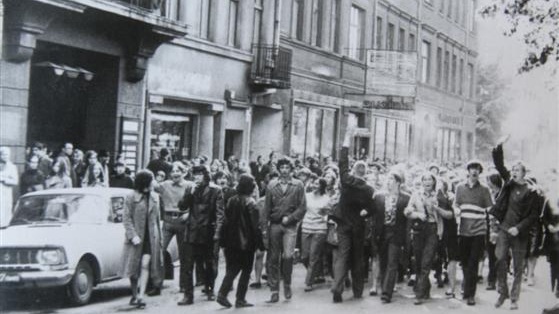

A protest in Kaunas after the self-immolation of Romas Kalanta. Similar protests took place in the Lithuanian communities abroad.
Under the Soviet rule, the city had been expanding northwards and was connected to Vilnius and Klaipėda by four-lane highways. Continuing urbanization increased its population to 214 000 in 1959 and 376 000 in 1980.
Second city of the modern Lithuania (1990-)
In 1990 Lithuania was re-established with the capital in Vilnius. The importance of Kaunas somewhat declined since and its population numbers were hit hard, decreasing from 418 000 in 1989 to a mere 321 000 in 2011. A large share of the Kaunas elite moved to Vilnius and many emigrated abroad.
Never-completed and abandoned Soviet hotels, that were an eyesore of 1990s and 2010s Kaunas. The economic growth warranted their demolition and replacement by modern buildings only in the 2010s.
While the post-independence economic growth started in Vilnius by ~1995 and then went to the seaport of Klaipėda it reached Kaunas by around 2003 with new office buildings and two major shopping centers (Akropolis and Mega) constructed. After Lithuania joined the European Union Ryanair started flying to Kaunas and brought in more tourists.
In 2011 the 17 000 seat Kaunas Arena was opened and it was the place of the final matches of the 2011 European Basketball Championship. As Lithuania's largest arena, it has hosted its largest concerts and international basketball events. In 2022, Kaunas also rebuilt the Lithuania's largest stadium, entrenching its status as an entertainment and sports capital of Lithuania.
~2015 Kaunas finally shed the remnants of the self-conscious image of the "second-and-far-behind" city as it has attracted foreign investment while its interwar heritage became increasingly recognized as unique in both Lithuania and abroad, getting UNESCO World Heritage recognition in 2023.
While the "New Kaunas" is still seen as more patriotic and genuinely Lithuanian than Vilnius (as epitomized in the construction of a large Lithuanian Coat of Arms monument that Vilnius refused to build as too "old-fashioned"), the city has also rapidly globalized mainly through the huge numbers of foreign students attracted by its universities. Unlike Vilnius and Klaipėda, where the key minorities tend to be Russian-speaking, the students of Kaunas are largely hailing from the Middle East, South Asia and beyond.
Get To And From Kaunas
Being the major city closest to the center of Lithuania, Kaunas is easily accessible by car and bus. Major four-lane highways directly connect it to Vilnius and Klaipėda. Via Baltica road (mostly two-lane) go southwards to Poland and northwards to Latvia via Panevėžys.
Direct rail connections to the west of Lithuania have never been built, however, therefore the rail is only convenient to go from Kaunas to Vilnius and certain towns in Sudovia region (Marijampolė, Kybartai).
Both the Kaunas train station and Kaunas bus station are located in the New Town next to each other.
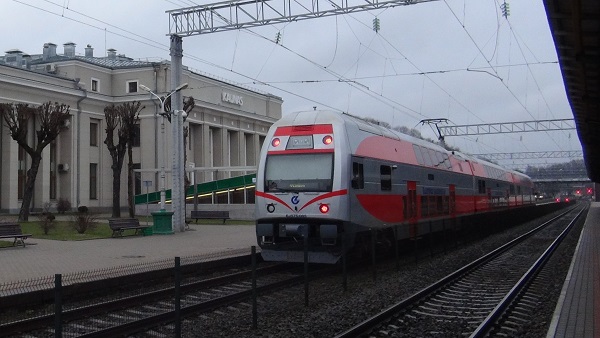

Double decker Vilnius-bound train at Kaunas station. These are the top passenger service in the otherwise rather outdated Lithuanian railroads, and the only one which is faster than buses. ©Augustinas Žemaitis.
Kaunas International Airport is the 4th largest in the Baltic States after the three capital airports. It became Eastern Europe's first Ryanair hub in the year 2010. Ryanair dominates its passenger flights offering high-frequency flights to the United Kingdom as well as scarcer routes to places like Germany or certain Southern European resorts. Unlike its Vilnius counterpart, the Kaunas airport is outside the city limits although it is still frequented both by city buses and more expensive private vans. Direct intercity buses link the Kaunas airport to Vilnius and Klaipėda but it is cheaper although time-intensive to transfer at Kaunas city.
Kaunas Airport is located next to Karmėlava suburb north of the city. The suburb is best known for its extra-large cepelinai national meal eagerly gouged by emigrants returning for holidays. These are served at multiple restaurants; authentic cepelinai are smaller, however.
Getting around Kaunas
Kaunas public transport consists of buses and trolleybuses. Trolleybuses and buses are municipal-owned. They use the same ticket. Trolleybuses serve the trunk routes and are more frequent (typically one every 10-20 minutes). However, the trolleybus network is limited to the districts north of Nemunas river. Buses serve the less popular routes, including the suburban ones (some buses go merely once in 2 hours, so better check the timetables before going to a stop).
A bus stop in Kaunas with a screen telling what buses would arrive. ©Augustinas Žemaitis.
The public transport system works from 5:30-6:00 to some 22:00-23:00. The airport bus is synchronized with flight times and operates longer. There is a modern information system at the main stops where screens show the upcoming transport and waiting times. The destination of every bus and trolleybus is written on the vehicles themselves.
A unique form of public transport in Kaunas are its interwar funiculars, constructed when buses were still unable to ascend the Kaunas hills. Now more of a tourist experience, they connect the downtown to vantage point locations in Aleksotas and Žaliakalnis.
The timetables and routes of Kaunas public transport are available here.
There are no public underground parking lots, but parking at the sides of the streets is both abundant and cheap by Western standards. Furthermore, the downtown is relatively compact (3,5x1,5 km) and parking in the surrounding low-rise districts (Žaliakalnis, Aleksotas, southern Vilijampolė) is both free and easier.
Aleksotas and Žaliakalnis hill districts are connected to Downtown by authentic interwar funiculars which became a symbol of Kaunas. ©Augustinas Žemaitis.
Leaving your car in the multi-storey parking of "Akropolis" shopping mall in the New Town district (Karaliaus Mindaugo Avenue) is another alternative if you don't mind exploring the downtown on foot (Old Town is 2 km away from there).
Shopping in Kaunas
Kaunas shopping scene is dominated by three large shopping centers. Each of them has shops of every kind, while the first two also have great entertainment and eating opportunities.
"Akropolis" mall (80 000 m2) is located in downtown. It doubles as an entertainment zone offering ice rink and cinema.
Massive parking of Akropolis mall, covering the street and (according to critics) the Carmelite church. ©Augustinas Žemaitis.
"Mega" mall (102 000 m2) is located on Vilnius-Kaunas-Klaipėda highway and thus is the easiest to access if you are just passing by Kaunas.
"Urmas" (70 000 m2) is a kind of shopping park with most shops accessible directly from outside. Developed from a marketplace, it has a distinctively different feel from the other two Kaunas malls as it is oriented mainly at shopping.
Beyond those, every district has smaller stores available. Big malls have effectively killed Kaunas high street (Laisvės alėja) however, with little shopping available there (after all, Akropolis is just 500 m away).
For grocery shopping as well as some souvenir shopping, supermarkets are a good option, available in every district. Moreover, various events are often held in Kaunas (mainly the downtown) which typically include fairs.
Urmas base shopping street in Kaunas. ©Augustinas Žemaitis.
Kaunas Festivals and Annual Events
Kaunas may have slowly ceded its status to Vilnius but it still hosts numerous national events as it is closest to the geographic center of Lithuania. Kaunas biker festival, operetta festival, and agricultural fair have importance reaching beyond the Lithuanian borders.
| Name | Date | Type | Event |
| MAMA music awards | Early Janurary | Music awards and concert | Best Lithuanian musicians and singers of various genres are elected by a jury. The gala format is joined with a public concert that easily sells out Kaunas arena in what aims to be the prime annual event of Lithuanian music. |
| Independence day parade | February 16th | Parade | A massive grassroots parade with flags and patriotic chants in downtown Kaunas. |
| Ką pasėsi agricultural fair | The first week of April | Fair | International showcase of agricultural vehicles and a fair of seeds and plants in Kaunas suburbs. ~20 ha territory also hosts concerts. |
| Kaunas Jazz | End of April–start of May | Music (jazz) festival | Born together with independent Lithuania in 1990 the festival brings local and foreign jazz musicians (~20 bands annually). Some concerts are free and some even take place in the streets. |
| Hansa days | A weekend in mid-may | Fair | Medieval arts and crafts are recreated (in addition to modern shopping opportunities) near the Kaunas castle. |
Medieval dance show during the Hansa days. ©Augustinas Žemaitis.
| Name | Date | Type | Event |
| Lithuanian Basketball League final series | Around April | Professional sports | Since 1998 the right to contest the champion rings of Lithuania’s major league is always won by the “Žalgiris” of Kaunas team, which typically has to fight "Lietuvos rytas" of Vilnius (pouring fuel into the eternal Vilnius vs. Kaunas rivalry). “Žalgiris” plays its home games in the modern 15 668 seat arena (largest in the Baltics) and it takes 4 victories to triumph. |
| Bike Show Millennium | A weekend in the beginning of June | Biker festival | One of the largest biker festivals in Europe Bike Show Millenium fills the old Kaunas airport with bike parades, races, stunts, and concerts. Recently it has been expanded to include quads and automobiles. |
| Pažaislis music festival | Entire summer | Music (classical) festival | While it started as a true music festival at the Pažaislis monastery garden in 1995 today it is a catch-all name for many classical music events taking place all over Kaunas and its suburbs throughout the summer. The concerts in churches are usually free. |
| Kaunas castle operetta | Start of July | Music (operetta) festival | Eastern Europe’s sole operetta festival is held annually near the Kaunas castle. |
| Akacijų alėja (Acacia Boulevard) | The Saturday closest to July 6th | Music (sung poetry) festival | A massive sung poetry concert. This genre is a very popular “alternative music” in Lithuania characterized by a single musician, single instrument, no special effects and thought-inspiring lyrics. Taking place in a Kaunas suburb of Kulautuva on Nemunas bank it is free but therefore crowded (~15 000 spectators). |
| Kaunas cinema festival | Late September-Early October | Cinema festival | Largest cinema festival in Kaunas takes place in Romuva interwar cinema. Various non-Hollywood films and documentaries are presented in the original languages with Lithuanian subs. |
| Christmas | December 25th | Christian holiday | Recently Kaunas became famous for the artfully inventive Christmas trees in its main Rotušės square. |
